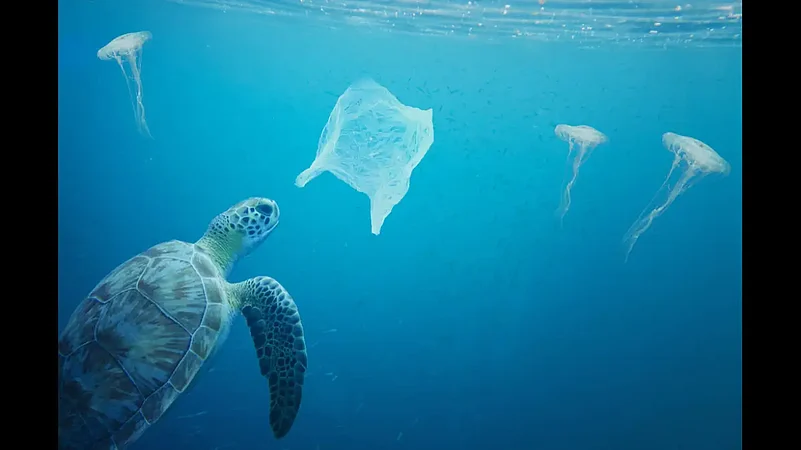Do you know what environmental scientists call the popular sailing route between California and Hawaii? The Great Pacific Garbage Patch. Surprised? But this is only the tip of the iceberg. They have also come across marine animals living on these plastic debris, sometimes miles away from their usual habitats.
While travelling across the oceans, visiting beaches, enjoying the sea food, and pursuing recreational activities such as diving, have been an important part of tourism, including providing local people with employment opportunities in many areas, unsustainable practices have also created havoc in the marine world. According to US-based Sustainable Travel International, tourism produces a substantial amount of waste and pollution too – it imposes ‘incredible strain on local waste management systems, causing landfills and sewage plants to overflow. Another major issue is the improper disposal of trash, raw sewage, and toxic chemicals by tourists, hotels, cruise ships, and others’.
Oceans cover over 70 per cent of the planet and is said to be our life source, ‘supporting humanity’s sustenance and that of every other organism on earth,’ according to the United Nations. Yet we have managed to cause extensive damage to this vast source in various ways, including depleting the marine flora and fauna.
In 2008, United Nations General Assembly designated June 8 as World Ocean’s Day. The observance not only aims to raise awareness ‘about the crucial role the ocean plays in our lives and the important ways people can help protect it’ but also ‘about the role of the United Nations and international law can play in the sustainable development and use of the oceans and their living and non-living resources.’
The theme for World Oceans Day 2022 is ‘Revitalization: Collective Action for the Ocean.’
Said UN Secretary-General António Guterres, “It is time to realize that, to achieve the Sustainable Development Goals and the objectives of the Paris Agreement on climate change, we urgently need collective action to revitalize the ocean. That means finding a new balance in our relationship with the marine environment.”
Incidentally, 2022 is the second year of the United Nations Decade of Ocean Science for Sustainable Development.
According to an article by NASA’s Earth Observatory, ‘about eight million tons of plastic flow from rivers and beaches into the ocean every year’. The debris include a variety of objects, ranging from large fishing nets to microplastics (plastic pieces smaller than 5mm). Carried by ocean currents and broken down by waves and sunlight, the microplastics accumulate as huge garbage patches in the calm centers of ocean gyres (rotating ocean currents). The debris not only spread across the surface of the water but also descend all the way to the ocean floor. Harming the marine ecology in the long run.

According to the NOAA Marine Debris Program, marine debris found in garbage patches can impact wildlife in a number of ways. Certain types of debris can injure or kill marine life. Animals get trapped or entangled in lost or abandoned fishing nets (ghost nets). Plastic debris such as packing straps, six-pack rings, handles of plastic bags, etc., which come with loops injure wildlife. Studies have shown how animals mistakenly eat plastic and fill full, and consequently refrain from eating real food. If marine life such as algae, barnacles, crabs or other species attach themselves to the marine debris, they may get carried away to new environments; invasive species can do harm to native species and disrupt the ecological balance. Scientists are also conducting studies to understand the impact of marine garbage patches on human life.
It is said that a lot of the plastic found in the ocean are actually coming from the world’s rivers. When Chris Ruf, principal investigator of the Cyclone Global Navigation Satellite System mission and University of Michigan research assistant Madeline Evans created time-lapse views of all of the major rivers in the world, they found large amounts of microplastics were coming from the Yangtze and the Ganga.
Nearer home, a recent report in the Hindustan Times mentioned how fisherfolks living along Mumbai’s coast and the Arabian Sea ‘are losing access to fishing commons and livelihoods due to plastic pollution’. The report has also quoted fishermen saying that ‘while hauling fish, they end up with several kilos of plastic waste which takes hours to segregate from the catch’. The plastic often damages their nets too.
A post-pandemic report published by the United Nations Environment Programme (UNEP) has revealed the world’s addiction to single use plastic. According to the report, ‘one million plastic drinking bottles are purchased every minute across the globe, while 5 trillion single-use plastic bags are used worldwide every year. In total, half of all plastic produced is designed to be used only once — and then thrown away’. The report also highlighted that if the current trend continues our oceans could contain more plastic than fish by 2050.
The COVID-19 pandemic has delivered a tremendous lesson – to survive the world has to devise sustainable and inclusive methods to do business. Reducing the use of plastic is no less important than controlling climate change, warn environmentalists.
Between June 27 and July 1 this year, Lisbon will be hosting the Ocean Conference as a collaboration between the governments of Portugal and Kenya. According to the organisers, the Conference is being held at a critical time when the world is seeking to address many of the deep-rooted problems in societies laid bare by the COVID-19 pandemic and which will require major structural transformations and common shared solutions that are anchored in the Sustainable Development Goals. Among other things, the Conference will be focusing on loss of habitats and biodiversity as well as marine litter and pollution.





















